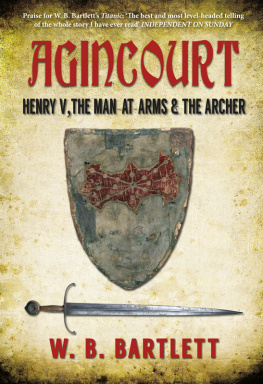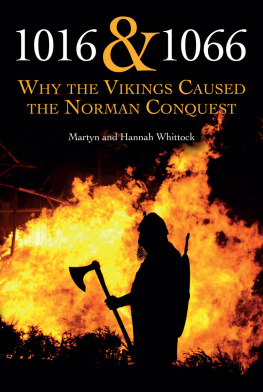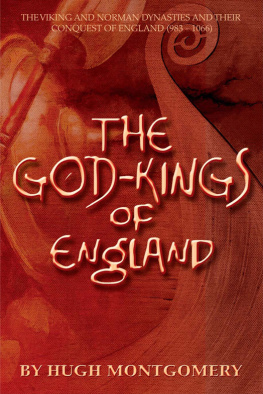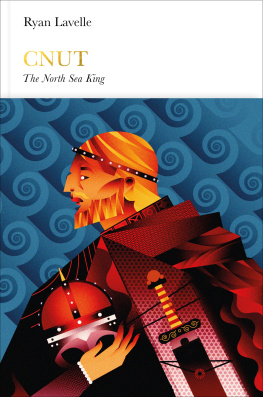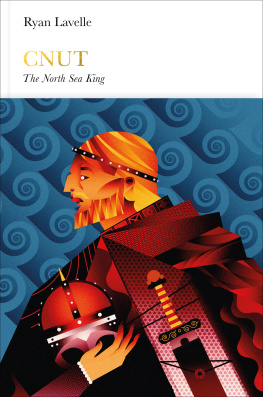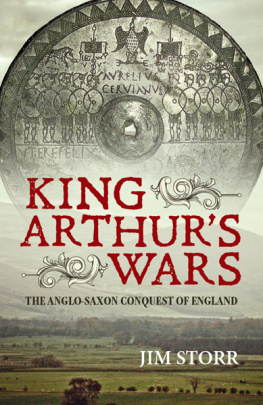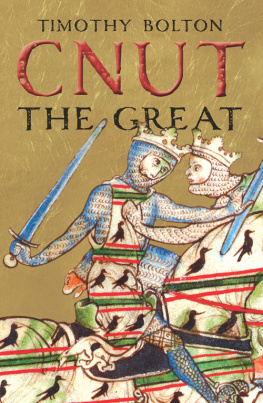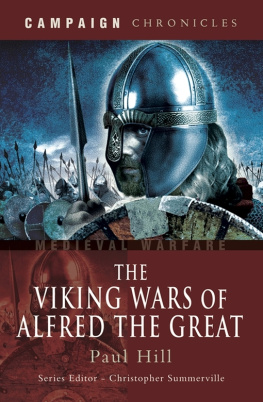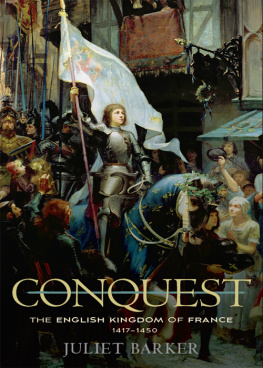First published 2016
Amberley Publishing
The Hill, Stroud
Gloucestershire, GL5 4EP
www.amberley-books.com
Copyright W. B. Bartlett, 2016
The right of W. B. Bartlett to be identified as the Author of this work has been asserted in accordance with the Copyrights, Designs and Patents Act 1988.
All rights reserved. No part of this book may be reprinted or reproduced or utilised in any form or by any electronic, mechanical or other means, now known or hereafter invented, including photocopying and recording, or in any information storage or retrieval system, without the permission in writing from the Publishers.
British Library Cataloguing in Publication Data.
A catalogue record for this book is available from the British Library.
ISBN 9781445645872 (PRINT)
ISBN 9781445645926 (eBOOK)
Map design by Thomas Bohm, User design.
Typesetting and Origination by Amberley Publishing.
Printed in the UK.
Contents
The North Atlantic in the Viking Age. (Author collection / Amberley Archive)
Scandinavia in the Viking Age. (Author collection / Amberley Archive)
The British Isles in the Viking Age. (Author collection / Amberley Archive)
Genealogy of Cnut. (Author collection / Amberley Archive)
Genealogy of Edmund Ironside. (Author collection / Amberley Archive)
Introduction
Since the Vikings seized the attention of historians and archaeologists in the Victorian era, fascination with them has never left us. Succeeding generations re-craft views of them to meet the needs of the time. Often there is a sinister undertone to all this: Hitler was quick to seize on the Viking motifs made popular in Germany in a different context by men like Richard Wagner. Most recently, show business has focused on the exploits of the semi-mythical Viking war-chief Ragnar Lodbrok (Hairy Breeches) to make the story fresh for the latest generation, whilst Bernard Cornwells historical novels on Uhtred of Bebbanburgh have struck a chord with readers young and old.
If the story of the Vikings still strikes a chord with us, and grabs the attention of film-makers and literary craftsmen alike, a book that seeks to understand the most successful real-life Scandinavian king of the entire Viking epoch would seem long overdue. Cnut is widely referred to as The Great in Denmark though the moniker is reserved pretty much exclusively for King Alfred in Britain. Here, Cnut is best remembered for a possibly apocryphal story about his vain attempts to turn back the sea, which is unfortunate given the great sweep of his reign, which had a huge impact on Britain and Scandinavia and in a different way on wider European affairs too.
Some of this is probably due to the fact that Cnut is Danish rather than English. It is understandable perhaps that a non-English king should not automatically be granted the high status that the acts of his reign might otherwise demand in England. There is a sense of damaged national pride in this; no one likes celebrating the prowess of someone who has bested them. But go to Scandinavia and the situation is different. The greatness of Cnut and his family is celebrated with much less embarrassment there.
If Cnut is little remembered in England, the events that led to his triumph 1,000 years ago are equally lacking in prominence in the collective English memory. I was recently reading a book on the Roman invasion of Britain. Written by a respected historian, it included a statement that there have only ever been two successful invasions of England: Roman and Norman. If a historian can overlook Cnuts conquest of 1016, then little wonder that it has escaped the consciousness of the general public.
These two thoughts are behind the writing of this book: the need to raise the profile of an unfairly overlooked king of England (and Denmark) and a timely reminder of a forgotten conquest as its millennium is at hand. Both elements provide fascinating storylines and what follows is an attempt to recreate them and give them their proper place in history. It is a fascinating tale and one that is long overdue a retelling.
PRELUDE
A Viking Saga
It was, according to the Anglo-Saxon Chronicles, sometime in the reign of King Beorhtric of Wessex, who ruled from 786 to 802, These vessels carried parties of strangers, men of a type who had not been seen in the country before. No one knew why they had landed and Beaduheards job was to bring them in for questioning to determine their motives.
We do not know very much about Beaduheard but perhaps we can be allowed some speculation. The Wessex in which he lived was a Christian realm but pagan antecedents in the region were not very far in the past. The great epic Beowulf had been written down probably not long before in Northumbria or Mercia but was almost certainly drawn from a much older oral tradition. As he made the short journey to the coast, perhaps after enjoying a last drink in the mead-hall before he left, words from that epic may have resonated with Beaduheard. In Beowulf these words were uttered by a sentry when seeing men in a strange craft for the first time: Strangers, you have steered this steep craft through the sea-ways, sought our coast. I see you are warriors; you wear that dress now. I must ask who you are.
A conscientious official who was determined to see that the strangers got up to no mischief, Beaduheard had ridden to the coast in order to compel the unannounced visitors to come with him to the kings town of Dorchester just a few miles off to explain themselves. Possibly the request, though justified in terms of honouring the king or ensuring that law and order was kept, was made in a haughty manner. Or maybe the men on the receiving end of the summons were just no respecter of any kind of authority. In any event the dutiful reeves blood was soon staining the sands red, the first known English victim of a Viking raid.
This was an act of piracy, no doubt disconcerting but not necessarily of particular note in what were very bloody times indeed. This was an era when warfare within a fragmented England was still a regular feature. It was in all probability a chance encounter, a case of the kings reeve being in the wrong place at the wrong time. No doubt the event registered on the consciousness of the people of England but it was probably seen as an unwelcome act of violence that was essentially a one-off.
But the incident paled into insignificance against what happened just a few years later in 793, a year when there were immense flashes of lightning and fiery dragons were seen flying in the air, portents of something terrible. Aidans monastery of Lindisfarne, where the holiest of English saints, Cuthbert, was buried, was on a tidal island off the coast of Northumbria and was one of the most sacred places in Europe, let alone England. In this year, this holy of holies fell prey to Viking raiders, its monks drowned in the sea or forced naked out of the abbey, its treasures looted, its fabric left in flames.


